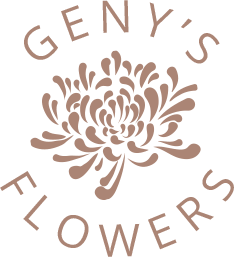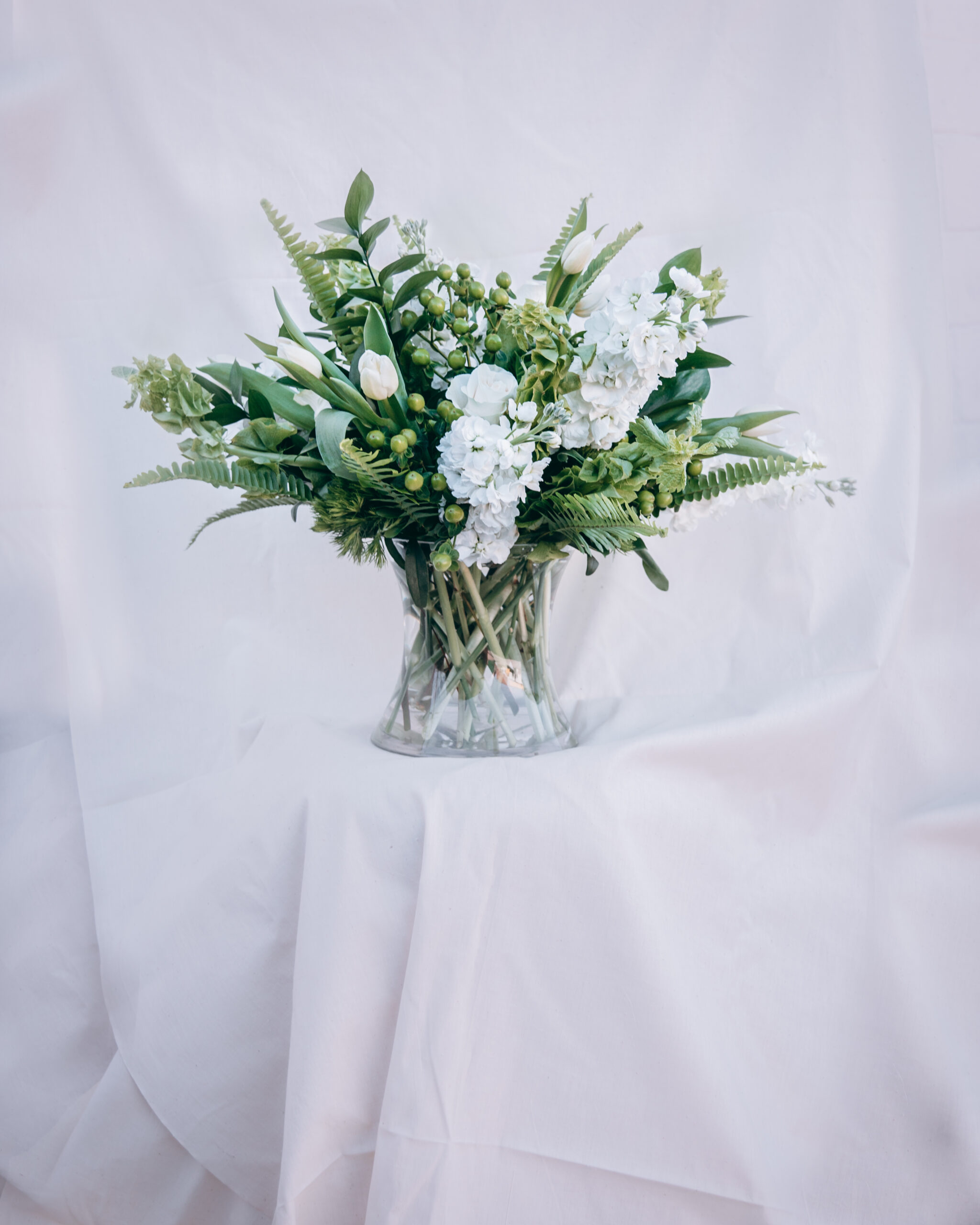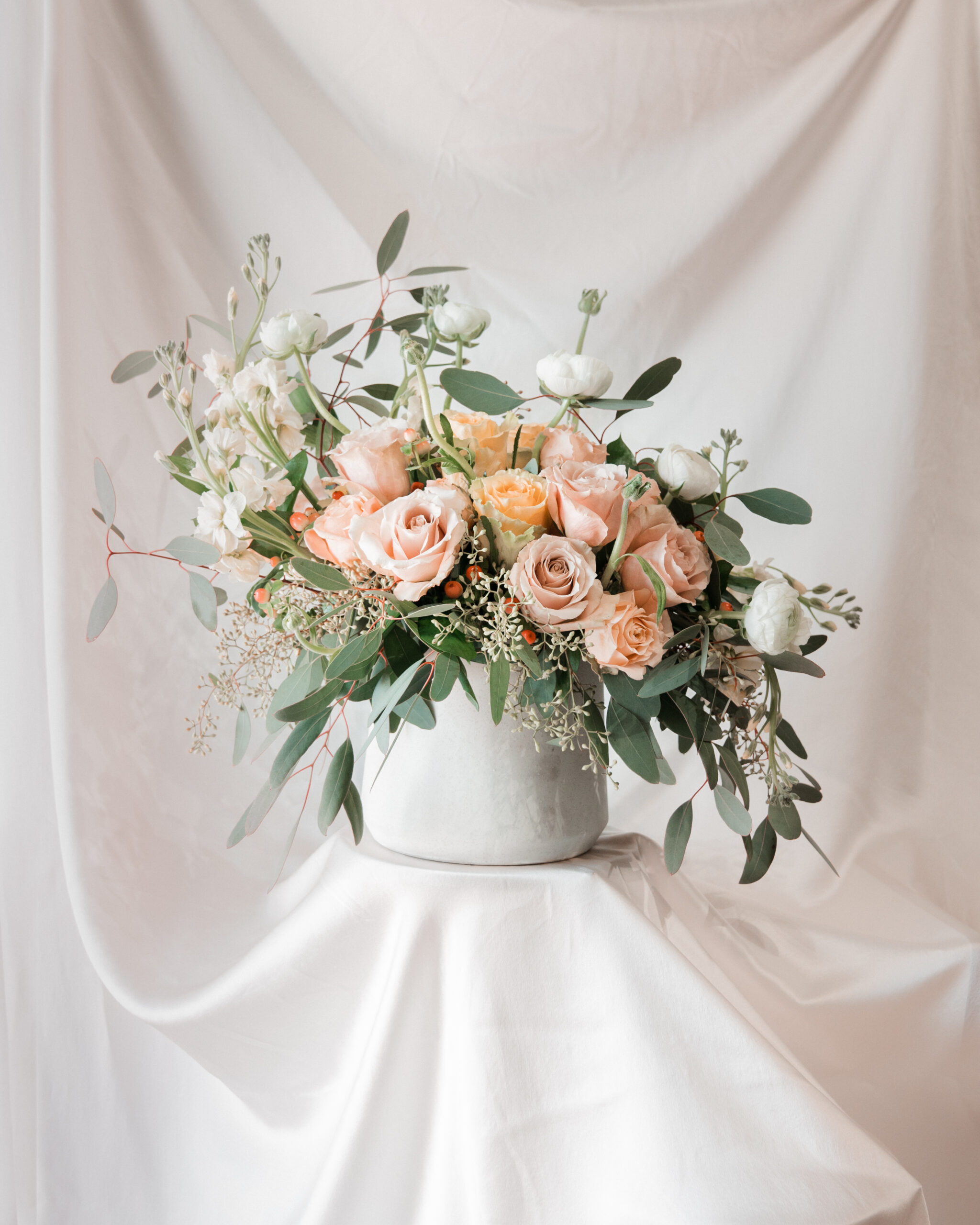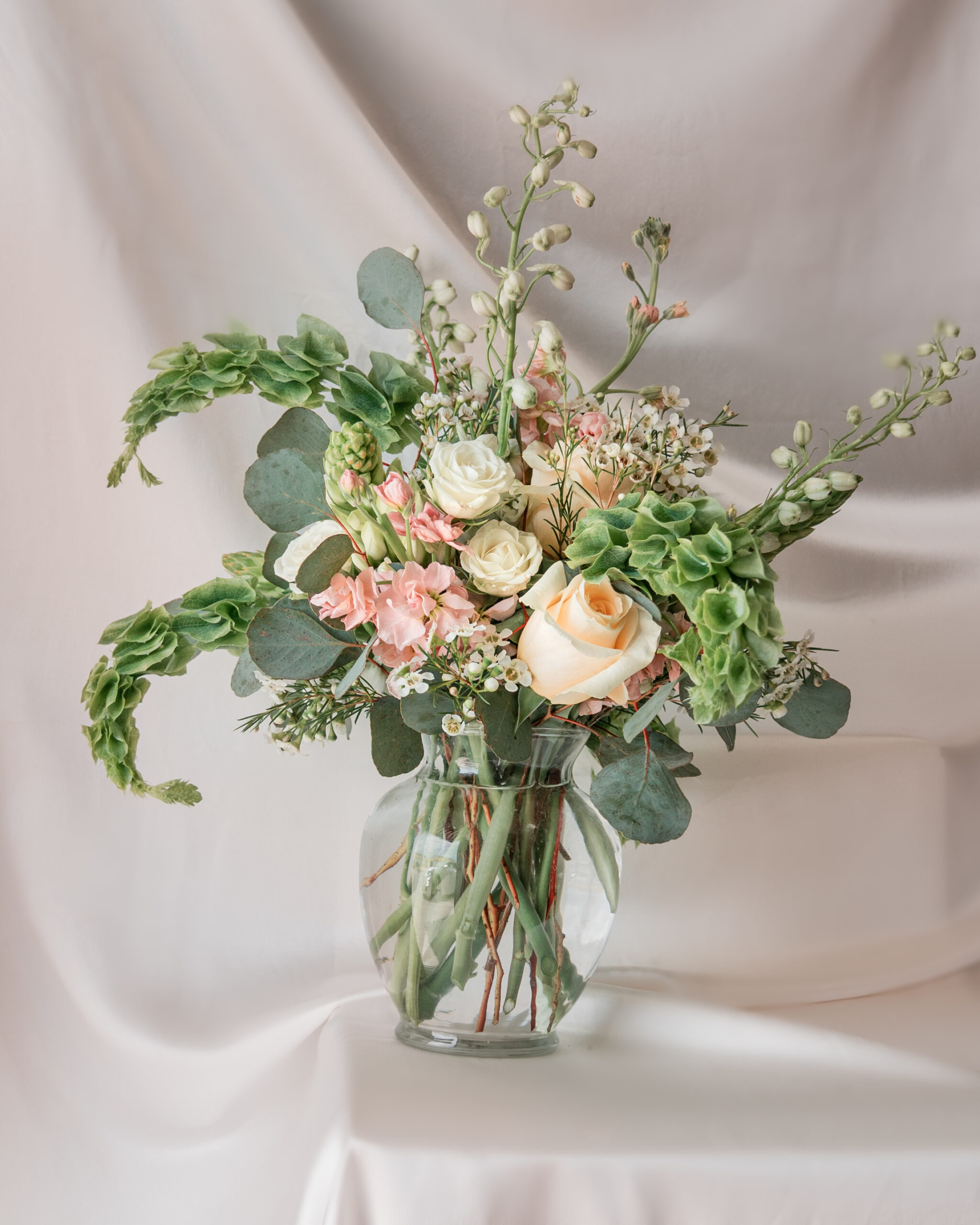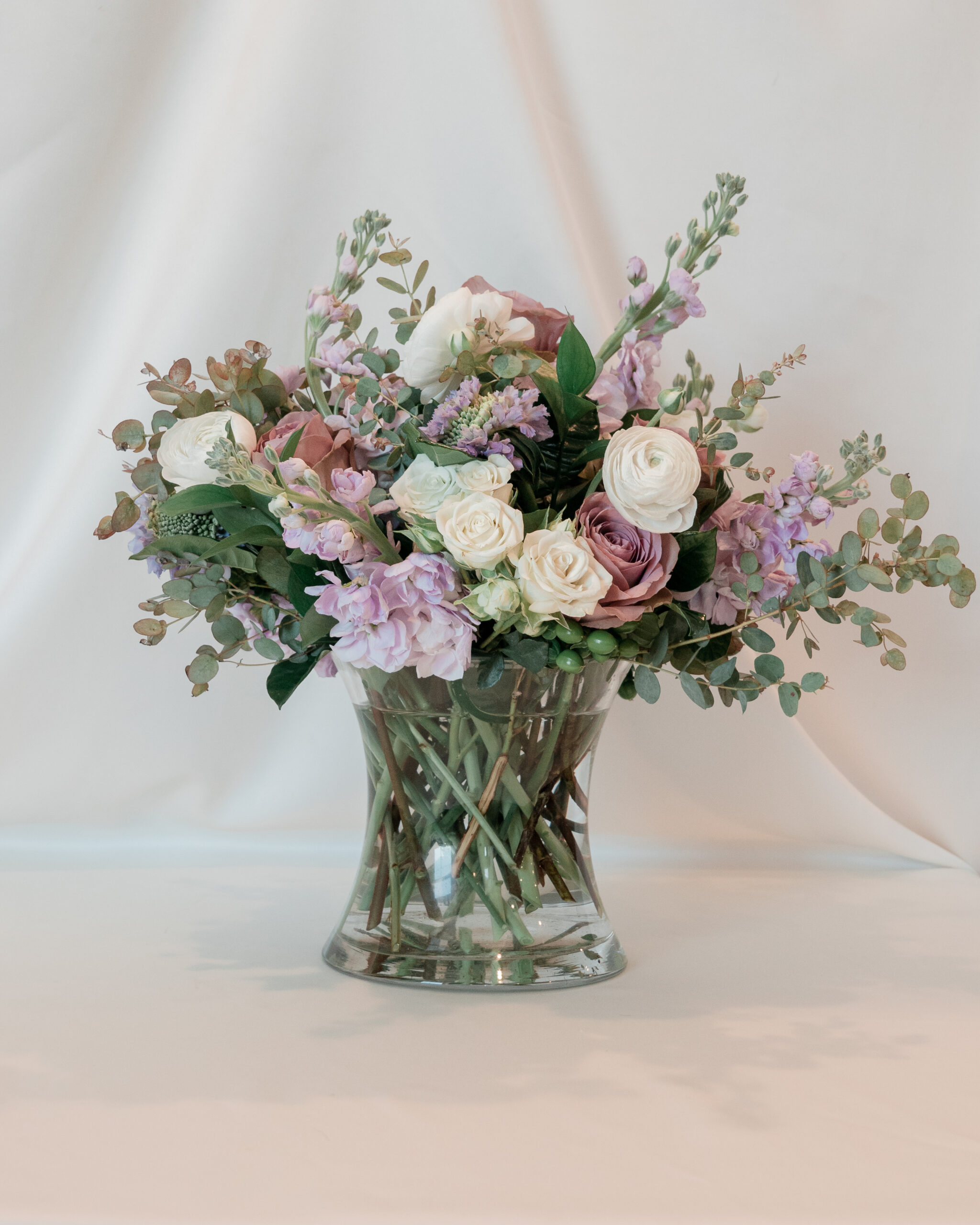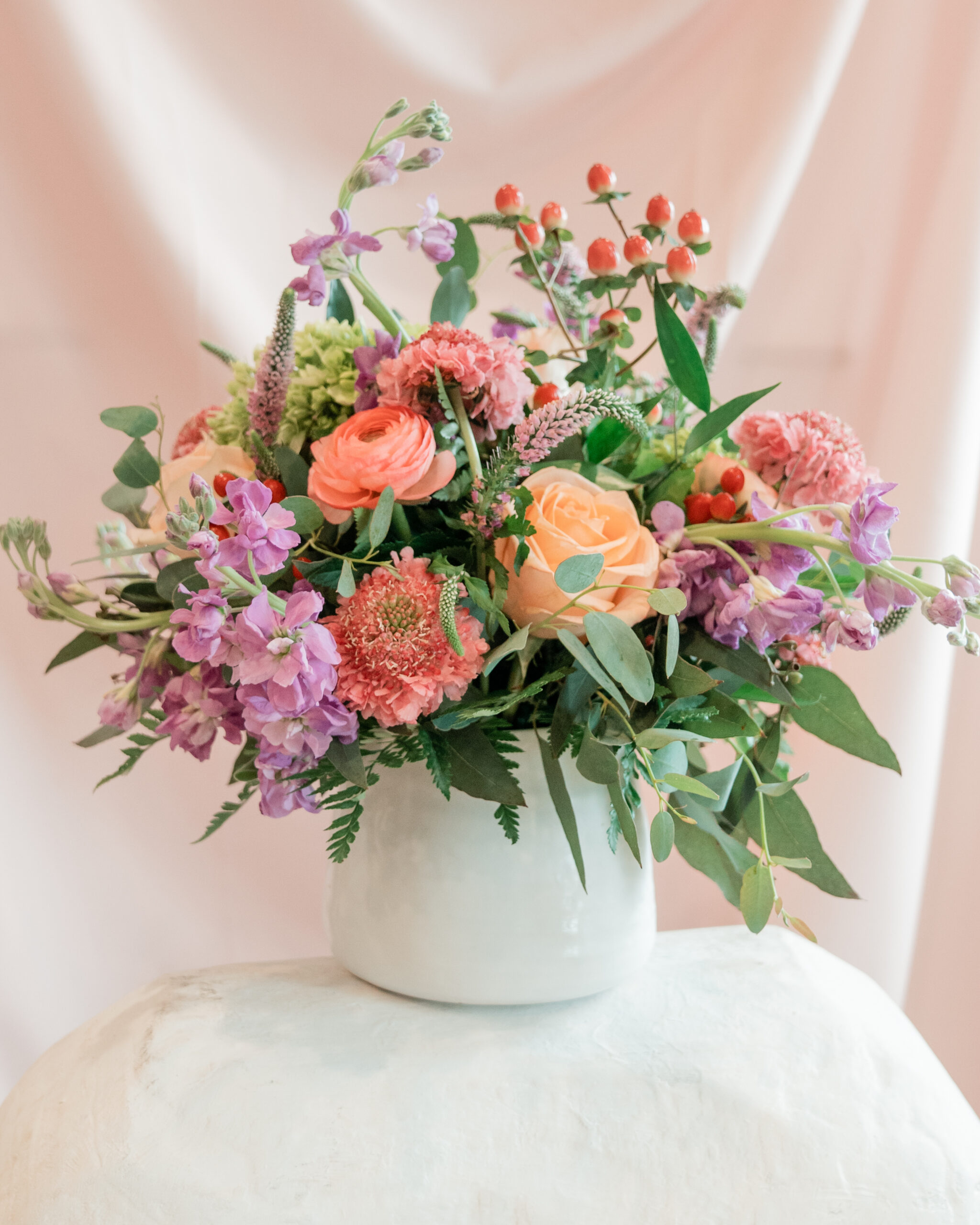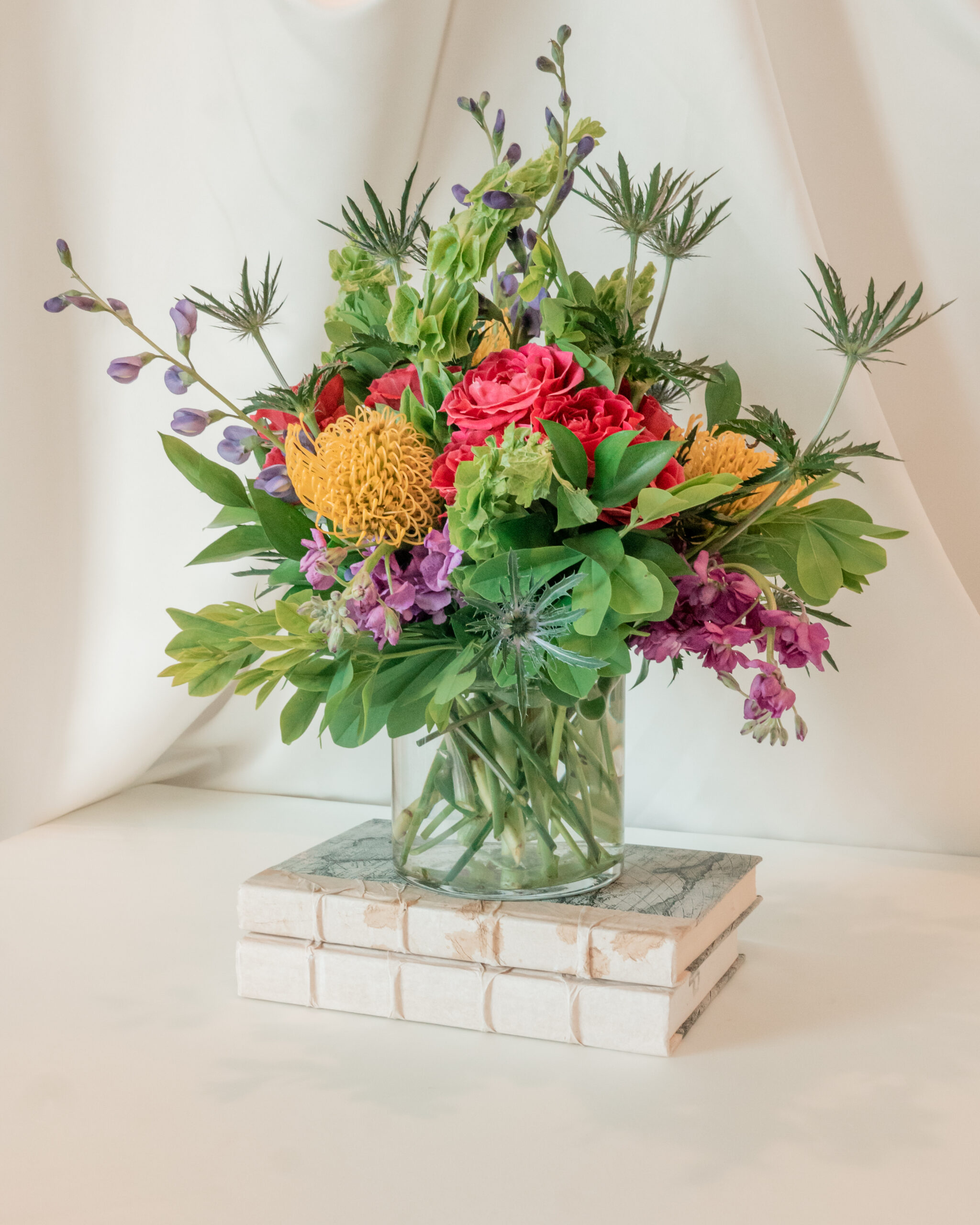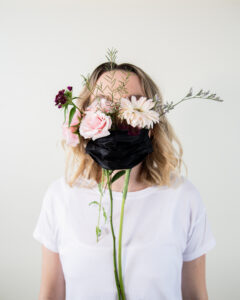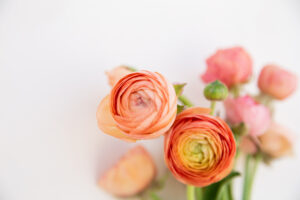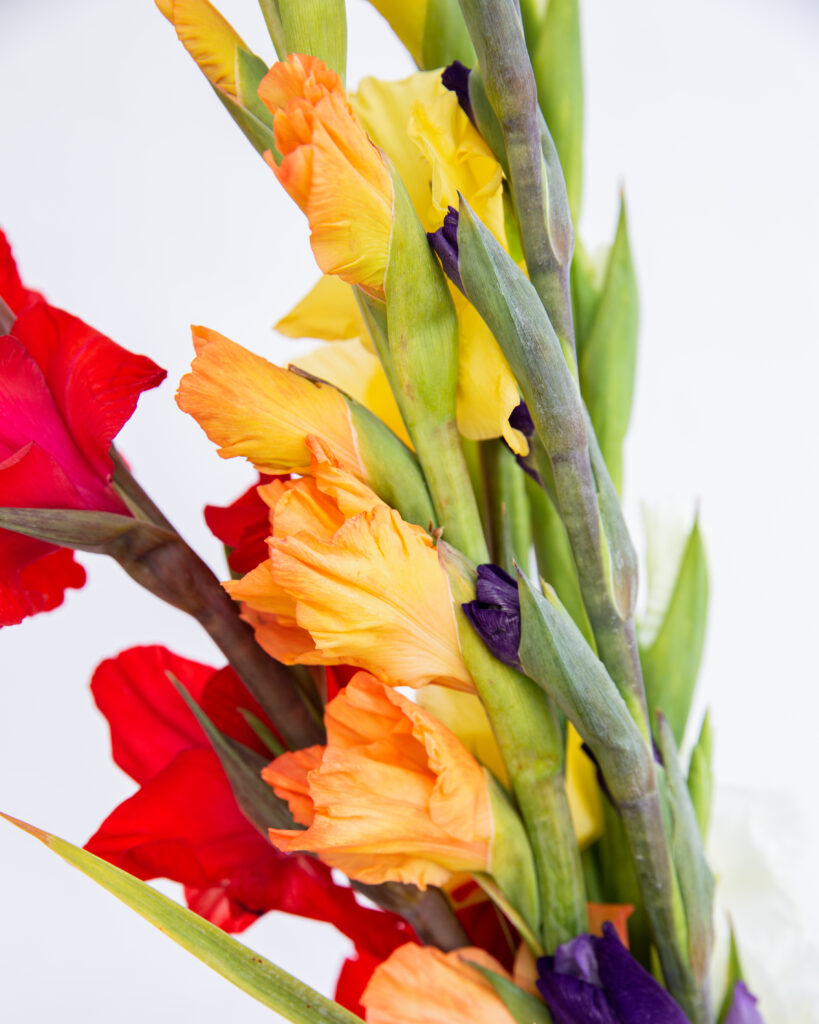
COLOR IS POWERFUL
Color gives life through hue and light. Bright colors provoke excitement and energy. Soft colors suggest ease and lightness. Neutral colors provide balance and cohesion. Yellow is associated with joy. Red is associated with intensity. White is associated with purity and innocence. Monochromatic design explores shape and composition around one color only. Contrasting design explores the union of the contrary and the marriage of opposites. Darker palettes often lend to moody aesthetics and softer palettes cling to the classics. What we do with color has meaning, implication, suggestion, and intent. Color can be used to convey or provoke emotion, establish brand association, and communicate without, or in addition to, words. Color is a powerful tool we hold at our disposal, especially in the land of design. In the world of flowers, color knows no bounds. From the varieties that hone in on sharply, vibrant hues to the multi-color hybrid blooms evolving over time, blooms come light, bright, dark, neutral, and everything in between.
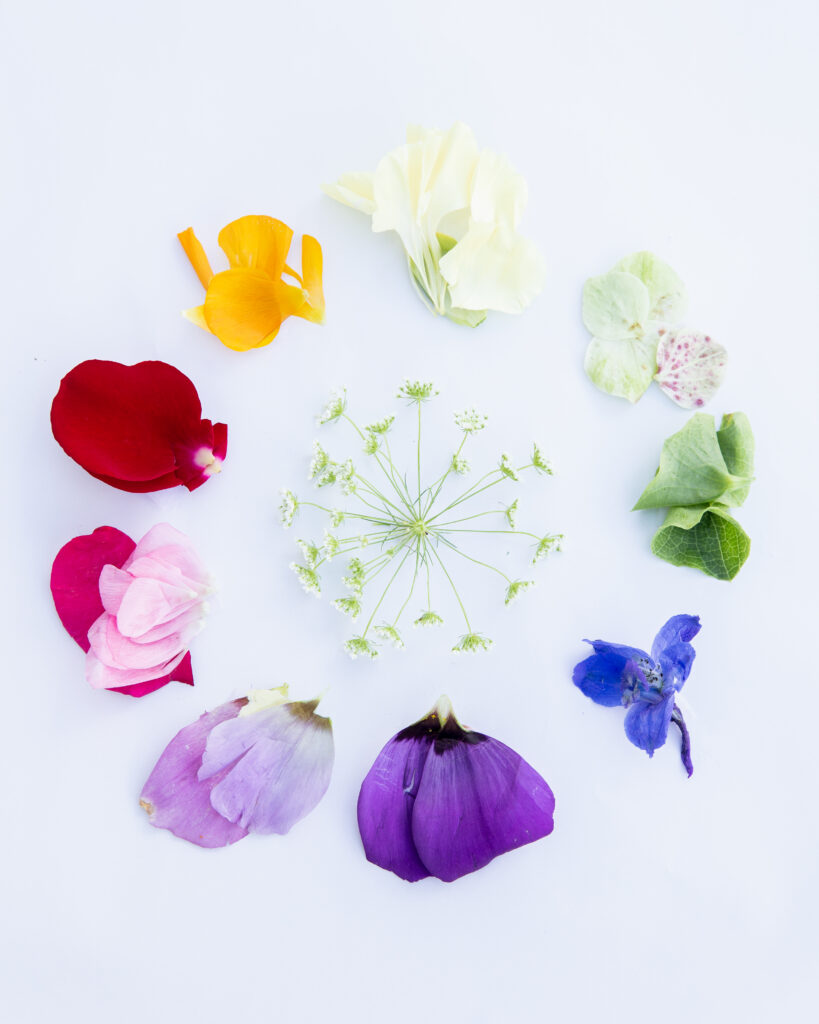
THE COLOR WHEEL
The color wheel was invented in the 17th century and, still today, serves to guide people through the relationships that naturally exist between colors. It points toward its’ opposite and neighbors near its’ similar. Spinning in a wheel, the rainbow of colors communicate their inherent design through a visual tool that is all-encompassing and perfectly intertwined. Within the wheel exists many different relationships, like complementary, analogous, and triadic. One side leans cool and the other leans warm. The primary colors form a triangle that sits perfectly amongst a triangle of secondary colors. The spectrum of light in all of its hues finds each a perfect home, leading us along the wonderful wheel of colors.
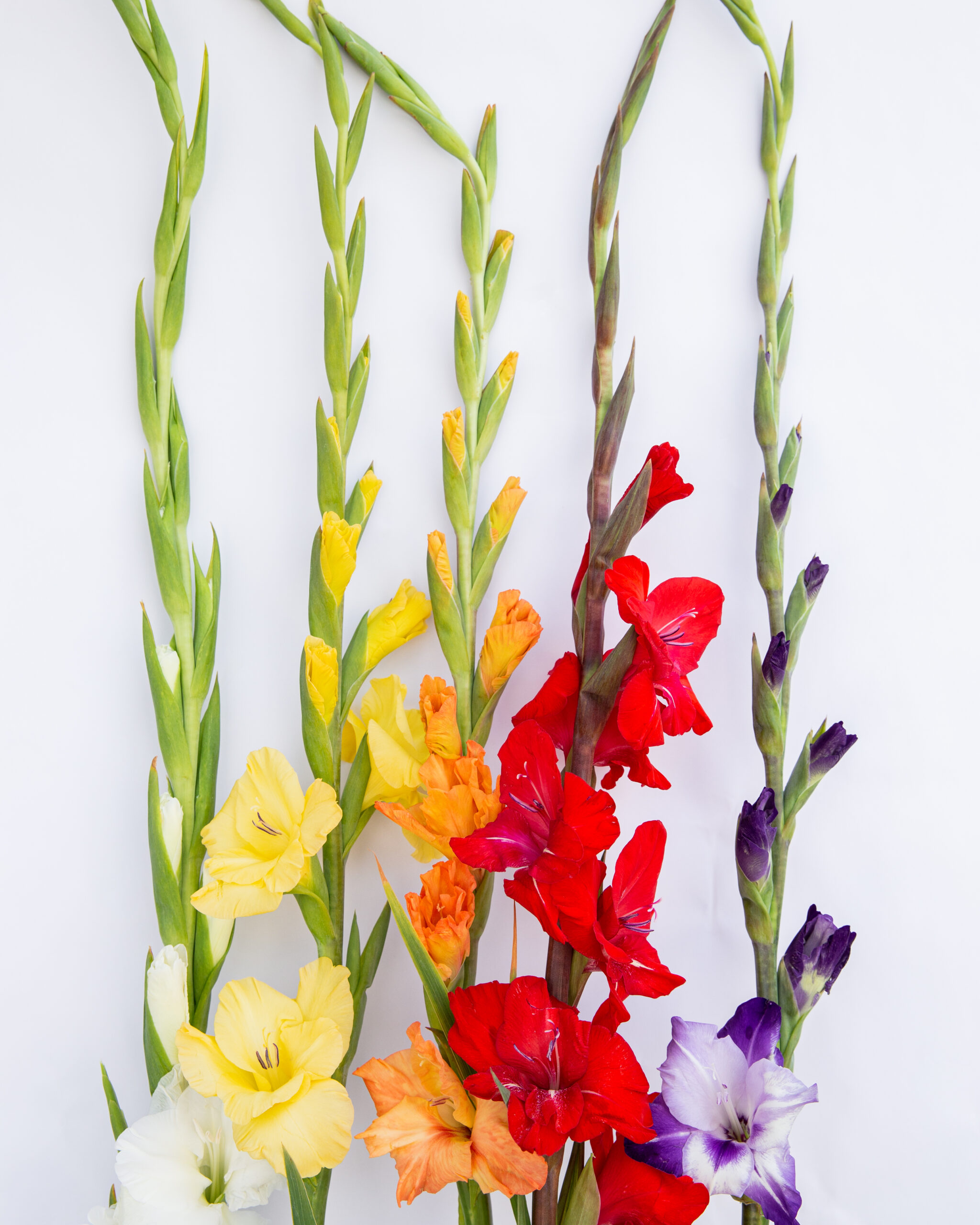
COLOR WHEEL BASICS
The primary colors are red, yellow, and blue. All color is created from these and they cannot be created elsewhere. The primary colors are the origin: Step One.
The secondary colors are orange, purple, and green. These colors are created by mixing two of the primary colors together. Red and yellow make orange. Yellow and blue make green. Red and blue make purple.
The mixing of primary and secondary colors create tertiary colors, which are red-orange, red-purple, blue-purple, blue-green, yellow-orange, and yellow-green. Alas, the color wheel, evolved from the initial 3 primary colors.
Hue relates to the pigment of a color. A hue is the most colorful version of a color. The addition of white and/or black to a hue creates tints, shades, and tones, either lightening, darkening, or dulling the hue. To lighten a hue, add white. To darken a hue, add black. To create a tone, add black and white. To create neutral tones, the primary palette can be mixed. This is a perfect tool for establishing different skin tones.

HOW THEY INTERACT
Once the colors are mixed and established, relationships can be found amongst them: Complementary colors are colors opposite to one another on the wheel, like red and green. The pairing of these colors enhance each other’s intensity. Triadic colors are three colors split evenly in the color wheel, like orange, purple, and green. These colors are often used in interior design and marketing for its vibrancy and balance. Analogous colors sit right next to one another, like a trio of neighbors, creating visual ease and harmony. These palettes are simple, pleasing, and mirrored in nature.
ARRANGING IN COLOR
When a floral designer is creating an arrangement, they take into consideration the intent. Who are the flowers being given to and why? Are these flowers for a man, a woman, a child, an announcement, a funeral, a wedding, a coffee table, a grand opening… do they need to be bold or simple? Elegant or wild? Understanding the psychology of color plays a huge role in how color will be received and met.
If someone wants to deliver flowers to a friend as a pick-me-up, perhaps a multi-color, vibrant and fun arrangement could better convey the uplifting message over a monochromatic, cool-toned, blue one. On the other hand, monochromatic arrangements are trendy these days. They offer a safe, easy, classic feel that could find itself pleasing in many different rooms with many different people. They don’t have to steal the show, but they can heavily support it. With flowers, we read the room. We look to the giver and the receiver. The intent. We look at what’s in season, in what size and varieties, and we look to the inherent rules of the color wheel to guide us in designing something beautiful, unique, and effective.

Geny’s in-house floral designer, Jim, lives this out with a motto he stands by: “Learn the rules so you know when (and how) to break them.”
We hope you found this to be helpful and have a colorful week ahead of you!
– Lilly Reynolds, Visual Artist

